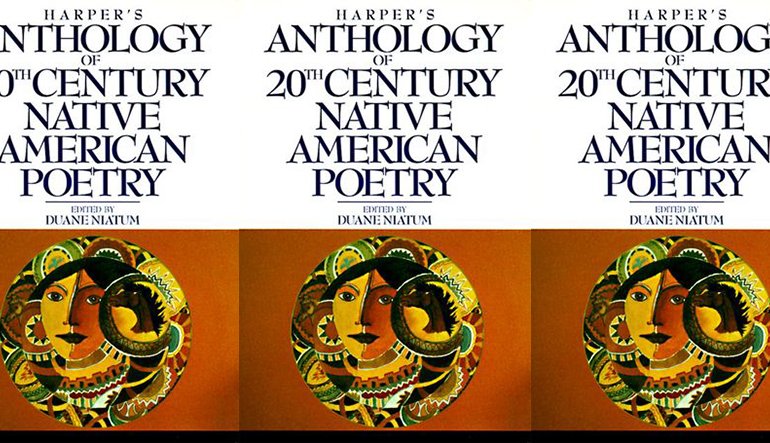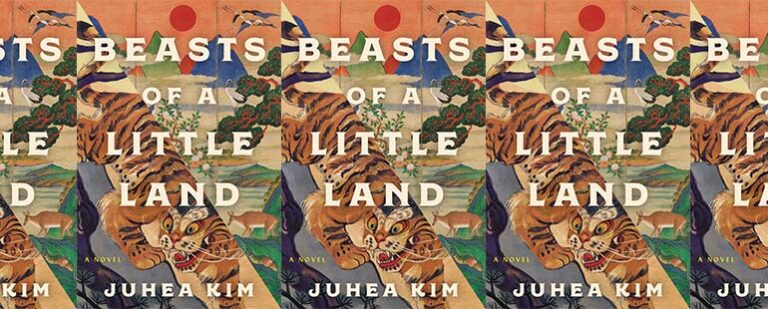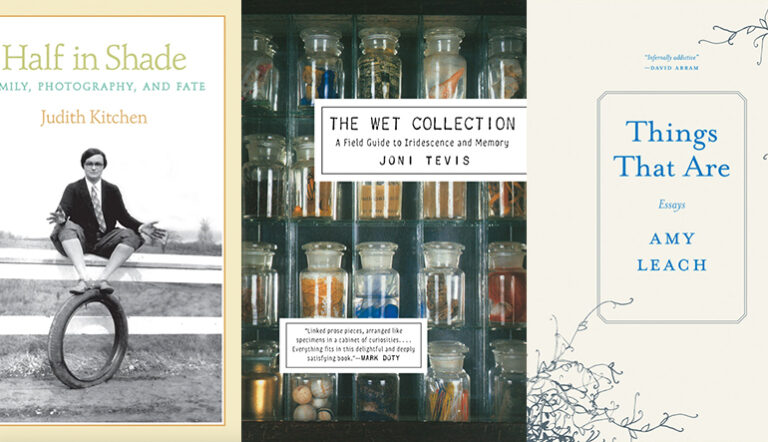Contemporary Native American Poetry Essentials

Some of the most interesting work in Contemporary American poetry is being done by American Indian writers. And yet, in the ongoing (and important) conversations about diversity and inclusion in United States literary production—especially in poetry—the work by Native Americans is often left out. This is both inexplicable and unacceptable. Life on the reservation or life as an urban Indian does not fit neatly into current debates about or contemporary representations of immigration, inner-city violence, police brutality, gun violence, Affirmative Action, border policies, racial profiling, or micro-aggressions—and yet all of these issues affect American Indian communities. And all show up in Native writing. Reading work by Native writers and poets is important for a number of reasons, but at the very least we should be reading Native writing because it helps tell the stories of America’s original selves.
Readers often wonder where they should start if they want to understand the major themes, forms, and strategies of recent Native poetry. The answer to this question, like the answer to most good questions, is complicated and controversial. Perhaps the most beguiling option is to take a look at Robert Dale Parker’s Changing is not Vanishing: A Collection of American Indian Poetry to 1930, an impressive feat of literary excavation. His archival research resulted in identifying almost 150 Indian poets publishing before 1930, many of whom were writing before 1900. In fact, he uncovered so much poetry by the noted Ojibwe poet Jane Johnston Schoolcraft, he edited a separate volume of her work. It is difficult to overstate the impact these discoveries will have on the field of American Indian poetry. We have known for some time that Indians were writing poems as early as the 1600s, but we have not really known much about the poems or poets. Before Phyllis Wheatley, Ebenezer Cook, or Susanna Wright, a select number of Natives were composing poetic texts, mostly in Latin and Greek and mostly through their studies at Harvard; most notably the enigmatic Elezar, the author of the oldest poem in the collection. Composed in both Latin and Greek, Elezar’s contribution is a fascinating elegy to a local pastor, Thomas Thatcher, and one of the great unknown Indigenous American texts.
If you don’t want to go back that far, consider a shorter journey to the 1980s. Though Native poets had been writing and publishing poems for decades, a perfect storm of groundbreaking books seemed to arrive all at once, announcing the presence and significance of American Indian poetic voices. In the early 80s, important figures like Lance Henson (Cheyenne/Oglala Sioux) and Maurice Kenny (Mohawk) published selected poems, while younger writers began to release their first books. For example, Leslie Marmon Silko’s (Laguna Pueblo) ground breaking Storyteller (1981) appeared, as did a number of canonical collections of American Indian poetry, such as Meskwaki writer Ray A. Young Bear’s Winter of the Salamander (1981), Osage poet Carter Revard’s Ponca War Dancers (1971), Louise Erdrich’s (Ojibwe) Jacklight (1984), Simon Ortiz’s (Acoma Pueblo) from Sand Creek (1981), and Mvskoke (Creek) poet and musician Joy Harjo’s She Had Some Horses (1983). The title poem from Harjo’s collection remains one of the most famous poems by a Native writer:
She had some horses who were bodies of sand.
She had some horses who were maps drawn of blood.
She had some horses who were skins of ocean water.
She had some horses who were the blue air of sky.
She had some horses who were fur and teeth.
She had some horses who were clay and would break.
She had some horses who were splintered red cliff.
Notable for its repetitions and its mythopoetic images, the poem moves back and forth between the real and unreal, the beautiful and the ugly. Later in the poem she has horses who “cried in their beer,” who “licked razor blades,” and who “prayed as they raped her.” Like Maurice Kenny, Harjo invokes tribally specific animals and landmarks, but her poem is punctuated with moments of despair, anger, and fear. Those very emotions animate most of the collection, She Had Some Horses, including the more memorable poems in the book, such as “Call It Fear,” “The Woman Hanging from the Thirteenth Floor Window,” “She Remembers the Future,” and “I Give You Back.” In these poems, the speaker attempts both to reclaim and reassemble the assailed self.
Pretty much the only way you can find all of these poets in one place is in the Harper’s Anthology of 20th Century Native American Poetry (1988)—a 432 page tome, edited by Duane Niatum, that remains the single most important collection of American Indian poetry. Part of this volume’s influence comes from Brian Swann’s introduction in which he contextualizes Native poetry within a larger indigenous framework. He lays out three main themes of Native poetry: “Voices of the Past: Oral Tradition,” “Reverencing Tradition: Ancestors and Myth,” and “Balancing Life: A Journey Toward Wholeness.” Within and under these rubrics, there are poems about alcoholism, colonialism, and tribalism; poems about America’s violent past and the reservation’s violent present, and the delicate balance between an oral tradition in Native languages and the written language of contemporary American English. For a reader interested in the landscape of Twentieth Century American Indian poetry before Sherman Alexie and Natalie Diaz, the Harper’s Anthology is probably the best option. That a comprehensive anthology of Indigenous American poetry has not been published in since 1988 is utterly depressing.
One of the great misconceptions about contemporary Native poetry is that it is all alike. Nothing could be further from the truth—even within the same tribal nations. Take for example Luci Tapahonso and Esther Belin. Despite the fact that both women are Navajo poets, their poems could not be more different. Tapahonso’s poetics skew toward Henson and Kenny—they are gentle poems about family, landscape, and the beauty of a holistic mode of being characterized by living in Dinetah, the Navajo homeland. In fact, many lines of her poems are written in the Navajo language, helping to paint one of the most comprehensive and nuanced portraits of Navajo life. In “This Is How They Were Placed for Us,” Tapahonso, in hypnotizing, incantatory language, evokes the spiritual and historical powers of the holy mountains:
The San Francisco Peaks taught us to believe in strong families.
Dook’o’ooslíí binahji’ danihidziil.
The San Francisco Peaks taught us to value our many relatives.
E’e’aahjígo Dook’o’ooslíí^d bik’ehgo hózhóní^go naashá. (Saani Dahataal)
By offering her poem as a gift to both the spirits of the San Francisco Peaks and her readers, Tapahonso reveals the source from which her poems and their magic derive:
All these were given to us to live by.
These mountains and the land keep us strong.
From them, and because of them, we prosper.With this we speak,
with this we think,
with this we sing,
with this we pray.This is where our prayers began.
On the other hand, Belin, who was raised in and around Oakland talks openly about not speaking Navajo and feeling disconnected from the reservation in In the Belly of My Beauty. Her texts are gritty, urban, jarring poems that, at times, have more in common with hip-hop than Tapahonso:
And Coyote struts down East 14th
feeling good
looking good
feeling the brown
melting into the brown that loiters
rapping with the brown in front of the Native American Health Center
talking that talk
of relocation from tribal nation
of recent immigration to the place some call the United States
home to many dislocated funky brown (“Blues-ing on the Brown Vibe”)
Though much of her writing is also about space and connection, Belin’s landscape is decidedly urban. Not surprisingly, then, Tapahonso’s work, which seems to rise from the sand and water of Diné itself, feels as though it is sculpted by an entirely different country than Belin’s poetic landscapes. That two Navajo poets could produce such different poetries is an indicator of the menu of good poetry emerging at this time.
Both Belin and Tapahonso publish with The University of Arizona Press, whose Sun Tracks series has been groundbreaking in Native literary production. As it happens, the story of Native poetry is also the story of the publishing of Native poetry. At present, only Louise Erdrich and Joy Harjo publish with major New York publishing houses. Most are published by university presses or small independent publishers like Copper Canyon or Hanging Loose Press. The Sun Tracks series is responsible for introducing to readers many of of the leading figures in the field, such as Simon Ortiz, Ofelia Zepeda, Carter Revard, N. Scott Momaday, Elizabeth Cook-Lin, Geary Hobson, and Janet McAdams, as well as books by excellent younger poets like Jennifer Elise Forester, Sherwin Bitsui, Molly McGlennen, and Heid E. Erdrich. It is impossible to imagine what Native poetry would look like if not for this revolutionary series.
Rivaling Sun Tracks is the fairly recent Earthworks initiative—an award-winning series of poetry collections by contemporary American Indian writers published by Salt Publishing, one of the most well-respected literary presses in England. With books by some of the field’s heaviest hitters including Carter Revard, Gerald Vizenor, LeAnne Howe, Phillip Carol Morgan, Heid E. Erdrich, Janet McAdams, Diane Glancy, Gordon Henry, Allison Adele Hedge Coke, and many others. Howe’s (Choctaw) Evidence of Red won an Oklahoma Book Award, and Erdrich’s (Ojibwe) The Mother’s Tongue was short-listed for the Minnesota Book Awards. McAdams’ collection Feral, and Revard’s How the Songs Came Down: New and Selected Poems both received a great deal of attention. The most ambitious book in this series is the beguiling Blood Run by Allison Adele Hedge Coke (Cherokee/Huron/Creek). A lyrical meditation on an area of important Oneonta mounds in South Dakota and Iowa now known as Blood Run, these poems chart a cartography of the mythic past and the dislocated present.
Fans of Fence, formal hybridity, flash fiction, and experimental poetics should try to get their hands on a special issue of Sentence: A Journal of Prose Poetry and Poetics released in 2009 that featured contemporary American Indian prose poetry. It represents the first anthology of Native prose poetry and one of the most interesting examples of the rich tapestry of contemporary Native writing. In the spirit of full disclosure, I should come clean and admit that I curated the feature. Despite that, it is still a really great collection.
There is a new generation of poets who I find particularly impressive in terms of innovative poetic form. Natalie Diaz is, of course, one of the most interesting writers around, regardless of genre. Her basketball poems are smart and fun and dark and wild. Orlando White is doing some fascinating stuff with linguistics, letters, alphabets, and the relationship we have to print, words, letters, and language. White established his interest in the verbal and the visual in the magnificent Bone Light (check out his poems about the letters i & j) his debut collection. Both Bone Light and his recent collection, LETTERRS, traffic in the semiotics of letters. For example, a sequence of poems in LETTERRS walks (writes?) the reader through the first segment of the alphabet with titles like “a,” “b,” “c,” “d,” and so on up through “h” where the letter poems stop, at least for the time being:
There’s a silence on paper that does not require ears only the reverberation
of a page turning —
She asks, so how does it feel to be a letter?
She waits for him to notice her. She is exclamation-like
but upended, her feet tiptoeing,
balletic in her black tutu;
scurrying dashes of ink calligraphic, as if quill pen
on parchment annotating solicitude.
Another poet who sees the English language as both blessing and curse is Sherwin Bitsui (Navajo). In “Apparition,” for example, blanks and clipped lines send the message that the world is, among other things, fragmented, indeterminate, absent:
I haven’t ________
since smoke dried to salt in the lakebed,
since crude oil dripped from his parting slogan,
the milk’s sky behind it,
birds chirping from its wig.
Many of Bitsui’s poems explore how different values, concepts, and ideas are when experienced in Navajo as opposed to English. In fact, at times, English (and its poetic tradition) feel more like an enemy than a mode of connection: “Read this, / understand their language, / or sleep in a bottle of broken nails for the rest of your life.
One of the most interesting books of poetry in (mostly) English over the past twenty years is James Thomas Stevens’ A Bridge Dead in the Water. No one seems to know about this book, but I think it is amazing. Stevens is Mohawk and his book takes on a number of pseudo-sacred ideas such as the Bering Strait theory, the ease of Eastern/Western relations, and the notion that learning English is both ethical and value-free. From a poetic perspective, though, the most interesting segment of the book is the crazy cool “Alphabet of Letters.” In a gesture that both waves at and gives the bird to such methods of Western knowledge and classification, “Alphabet of Letters” converts the traditional American school book into a veritable collage of signifiers. Subtitled “A New Primer for the Use of Native or Confused Americans,” this 20+ page “poem” collates phonics, classical rhetoric, a 1766 inventory list, false and real headlines, instructions on diphthongs, snatches of correspondence, a short Mohawk/English dictionary, and even heroic couplets as an alphabet lesson (K When KING Phillip, dead did lay, / the Puritans did Make their Way.”
There are a few forthcoming projects I am extremely excited about, including Layli Longsoldier’s first book, Whereas, which is coming out in the spring of 2017 from Graywolf. I’ve loved Longsoldier’s poems for a long time, and I’m eagerly anticipating them collected into a single volume. Heid E. Erdrich’s new collection, Curator of Ephemera: At the New Museum for Archaic Media, which is forthcoming from Michigan State University Press, is just great. She picks up where she left off in National Monuments but adds some fascinating poems in Anishinaabemowin, co-written with Margaret Noodin. I also recently read LeAnne Howe’s new book in manuscript. Entitled Savage Conversation. Howe has done a great deal of research, combing through a variety of documents. The book takes as its point of departure, President Lincoln’s 1862 order to execute thirty-eight Dakota in Mankato, Minnesota for their actions in the Dakota War against white settlers. From there, the book moves to a series of poems that are a riveting dialogues between Mary Todd Lincoln and the “Indian Spirit” who visits her nightly. According to Ms. Lincoln, the Indian “slits my eyelids and sews them open, always removing the wires by dawn’s first light.” These texts, both lyrical and spooky, both insane and innovative, are like nothing I’ve ever read. Some excerpts appeared in the recent journal 580 Split, where you can see a free preview.
I’m also particularly excited by a small group of American poets writing poetry in Indigenous languages. Margaret Noodin, who I mentioned above, is doing some of the most interesting work in this arena, as is Joan Naviyuk Kane, Philip Carroll Morgan, Luci Tapahonso, and Rex Lee Jim. English might be American; but it is not indigenous to America. There is something wholly refreshing about Indigenous writers composing poetry in language Native to this land.
Image: Book cover detail of Harper’s Anthology of 20th Century Native American Poetry, edited by Duane Niatum


